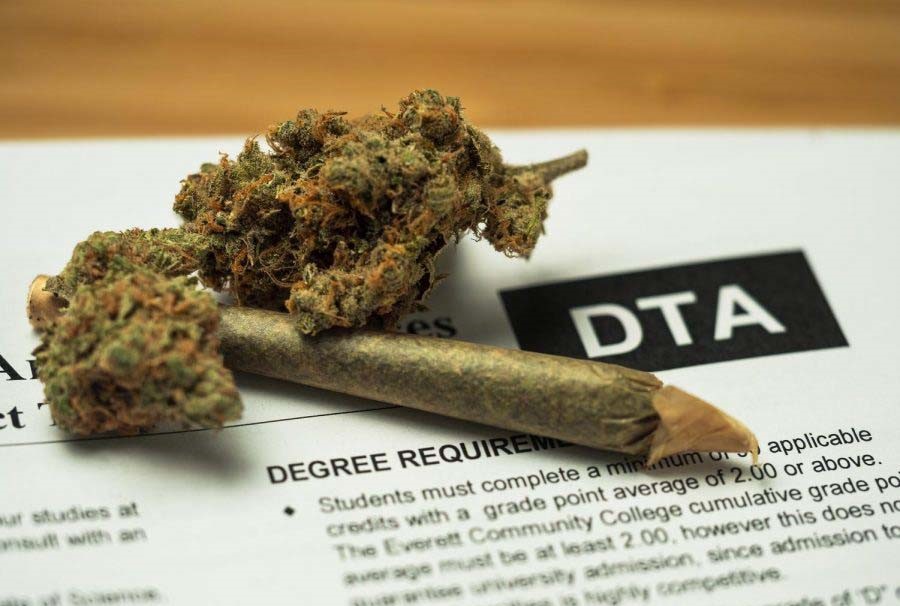In March 2020, college campuses across the United States closed because of the COVID-19 pandemic. These closures led to many changes, including a move from in-person classes to online classes. In addition, many students returned home to live with their parents in response to on-campus housing being shut down or for other pandemic-related reasons.
What effect might these changes have on college students’ cannabis use? Some speculated that students would increase their cannabis use because they had more unstructured time and may use to cope with increased stress and social isolation that resulted from the pandemic. Others countered that use would decrease because of the restrictive environment of living with one’s parents, fewer social occasions, and less access to cannabis. Some even thought that students might change the type of cannabis they were using. For example, use of edible and vaped cannabis could increase, whereas smoking of leaf cannabis might decrease, in an attempt to avoid parental detection. In a recent article in the Journal of Studies on Alcohol and Drugs entitled “Changes in cannabis consumption among college students during COVID-19”, Rutgers researcher Helene White, along with colleagues at Brown University addressed these questions.
In May 2020, their group renewed contact with college students who earlier had participated in a study of alcohol and cannabis co-use. These students, who had all used both alcohol and cannabis in the prior 3 years, were invited to complete an online survey regarding their cannabis use in the month before campus closure (approximately mid-February to mid-March 2020 [pre-closure]) and the month before the May survey administration. They then completed another online survey in September 2020 regarding their cannabis use in the time since remote classes had ended. The sample for this study was limited to the 233 students who reported cannabis use during at least one of the three periods.
In the month before campus closure, 87% of students reported having used cannabis, whereas at the time of the May 2020 survey 76% reported past-month cannabis use. There were statistically significant declines in use of all three of the specific forms of cannabis assessed: leaf, edibles, and concentrates.
Living situation mattered: Those who remained living dependently (i.e., with parents or a friend’s family) and those who moved from living independently (e.g., in a dorm, apartment with friends) to dependently reduced their cannabis use. In contrast, those who remained living independently did not change their use.
Although the proportion of students using cannabis declined, the number of days per week students used cannabis did not significantly change from pre-closure to the May 2020 survey. Furthermore, there were no changes in any aspect of cannabis use (proportion of students using, form of use, or frequency of use) between the May and September 2020 surveys; that is, in the months after campus closure, the original declines in cannabis use stabilized.
Although the analyses did not reveal average changes in how often students were using cannabis, the majority of participants perceived a change in their cannabis use frequency between the month before campus closure and May 2020, with similar percentages of participants perceiving an increase (40%) versus a decrease (36%).
Among those who perceived they had decreased the frequency of cannabis use from pre-closure to post-closure, the most common reasons were a lack of social opportunities and limited access. Not being allowed to use at home or having to hide use were also common reasons for declines. Among those who perceived an increase in their cannabis use, greater access and opportunity were prevalent explanations. Many also endorsed boredom and/or more time to relax and enjoy cannabis. The majority of the sample who reported increases in cannabis use endorsed at least one coping-related reason (e.g., to deal with stress).
Overall, the results of this study document declines in the proportion of students using (but not frequency of use) for all forms of cannabis use among students who left campus during COVID-19. Changes in living situation (moving away from living independently to living with parents) were, in part, responsible for the declines in cannabis use. This finding is consistent with prior research suggesting that continued parental involvement, including living with parents, may serve a protective role in substance use.
To reduce cannabis use among college students, it may not be feasible to recommend that they live at home. Nonetheless, a practical approach that may prove effective is to include parents in interventions for college student cannabis use. University officials, parents, and clinicians might also help students find other ways to meet the needs that cannabis appeared to serve during the pandemic, such as boredom relief and coping with stress.
References
Merrill, J. E., Stevens, A. K., Jackson, K. M., & White, H. R. (2022). Changes in cannabis consumption among college students during COVID-19. Journal of Studies on Alcohol and Drugs, 83, 55–63. doi:10.15288/jsad.2022.83.55
Merrill, J. E., Stevens, A. K., Jackson, K. M., & White, H. R. (2022). COVID-19, college campus closures, and cannabis consumption changes: Students who left college to live with parents were less likely to use cannabis. JSAD FastTakes, no. 5. doi:10.15288/jsad-FT.07.05.2022-5

